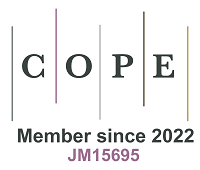REFERENCES
1. Adalbert R, Nogradi A, Babetto E, et al. Severely dystrophic axons at amyloid plaques remain continuous and connected to viable cell bodies. Brain 2009;132:402-16.
2. Orimo S, Amino T, Itoh Y, et al. Cardiac sympathetic denervation precedes neuronal loss in the sympathetic ganglia in Lewy body disease. Acta Neuropathol 2005;109:583-8.
3. Ferraiuolo L, Kirby J, Grierson AJ, Sendtner M, Shaw PJ. Molecular pathways of motor neuron injury in amyotrophic lateral sclerosis. Nat Rev Neurol 2011;7:616-30.
4. Coleman M. Axon degeneration mechanisms: commonality amid diversity. Nat Rev Neurosci 2005;6:889-98.
5. Palumbo A, Grüning P, Landt SK, et al. Deep learning to decipher the progression and morphology of axonal degeneration. Cells 2021;10:2539.
6. Lomoio S, Willen R, Kim W, et al. Gga3 deletion and a GGA3 rare variant associated with late onset Alzheimer's disease trigger BACE1 accumulation in axonal swellings. Sci Transl Med 2020:12.
7. Sekigawa A, Takamatsu Y, Sekiyama K, Hashimoto M. Role of α- and β-synucleins in the axonal pathology of parkinson's disease and related synucleinopathies. Biomolecules 2015;5:1000-11.
8. Kobayakawa Y, Sakumi K, Kajitani K, et al. Galectin-1 deficiency improves axonal swelling of motor neurones in SOD1(G93A) transgenic mice. Neuropathol Appl Neurobiol 2015;41:227-44.
9. Galvin JE, Uryu K, Lee VM, Trojanowski JQ. Axon pathology in Parkinson's disease and Lewy body dementia hippocampus contains alpha-, beta-, and gamma-synuclein. Proc Natl Acad Sci U S A 1999;96:13450-5.
10. Kuijpers M, Kochlamazashvili G, Stumpf A, et al. Neuronal autophagy regulates presynaptic neurotransmission by controlling the axonal endoplasmic reticulum. Neuron 2022;110:734.
11. Öztürk Z, O'Kane CJ, Pérez-Moreno JJ. Axonal endoplasmic reticulum dynamics and its roles in neurodegeneration. Front Neurosci 2020;14:48.
12. Sharoar MG, Shi Q, Ge Y, et al. Dysfunctional tubular endoplasmic reticulum constitutes a pathological feature of Alzheimer's disease. Mol Psychiatry 2016;21:1263-71.
13. Westrate LM, Lee JE, Prinz WA, Voeltz GK. Form follows function: the importance of endoplasmic reticulum shape. Annu Rev Biochem 2015;84:791-811.
14. Luarte A, Cornejo VH, Bertin F, Gallardo J, Couve A. The axonal endoplasmic reticulum: one organelle-many functions in development, maintenance, and plasticity. Dev Neurobiol 2018;78:181-208.
15. Shibata Y, Shemesh T, Prinz WA, et al. Mechanisms determining the morphology of the peripheral ER. Cell 2010;143:774-88.
16. Baumann O, Walz B. Endoplasmic reticulum of animal cells and its organization into structural and functional domains. Elsevier; 2001. pp. 149-214.
17. Lin S, Meng T, Huang H, et al. Molecular machineries and physiological relevance of ER-mediated membrane contacts. Theranostics 2021;11:974-95.
18. Terasaki M, Slater NT, Fein A, Schmidek A, Reese TS. Continuous network of endoplasmic reticulum in cerebellar Purkinje neurons. Proc Natl Acad Sci USA 1994;91:7510-4.
19. Wu Y, Whiteus C, Xu CS, et al. Contacts between the endoplasmic reticulum and other membranes in neurons. Proc Natl Acad Sci U S A 2017;114:E4859-67.
23. Terasaki M, Shemesh T, Kasthuri N, et al. Stacked endoplasmic reticulum sheets are connected by helicoidal membrane motifs. Cell 2013;154:285-96.
24. Oertle T, Klinger M, Stuermer CA, Schwab ME. A reticular rhapsody: phylogenic evolution and nomenclature of the RTN/Nogo gene family. FASEB J 2003;17:1238-47.
25. Powers RE, Wang S, Liu TY, Rapoport TA. Reconstitution of the tubular endoplasmic reticulum network with purified components. Nature 2017;543:257-60.
26. Voeltz GK, Prinz WA, Shibata Y, Rist JM, Rapoport TA. A class of membrane proteins shaping the tubular endoplasmic reticulum. Cell 2006;124:573-86.
27. Gao Y, Jiang T, Qu C, et al. Atlastin-1 regulates dendritic morphogenesis in mouse cerebral cortex. Neurosci Res 2013;77:137-42.
28. Orso G, Pendin D, Liu S, et al. Homotypic fusion of ER membranes requires the dynamin-like GTPase atlastin. Nature 2009;460:978-83.
29. English AR, Voeltz GK. Rab10 GTPase regulates ER dynamics and morphology. Nat Cell Biol 2013;15:169-78.
30. Gerondopoulos A, Bastos RN, Yoshimura S, et al. Rab18 and a Rab18 GEF complex are required for normal ER structure. J Cell Biol 2014;205:707-20.
31. Chen S, Desai T, McNew JA, et al. Lunapark stabilizes nascent three-way junctions in the endoplasmic reticulum. Proc Natl Acad Sci USA 2015;112:418-23.
32. Yamamoto Y, Yoshida A, Miyazaki N, Iwasaki K, Sakisaka T. Arl6IP1 has the ability to shape the mammalian ER membrane in a reticulon-like fashion. Biochem J 2014;458:69-79.
33. Sonda S, Pendin D, Daga A. ER morphology in the pathogenesis of hereditary spastic paraplegia. Cells 2021;10:2870.
34. Joshi AS, Ragusa JV, Prinz WA, Cohen S. Multiple C2 domain-containing transmembrane proteins promote lipid droplet biogenesis and growth at specialized endoplasmic reticulum subdomains. Mol Biol Cell 2021;32:1147-57.
35. Roy S. Seeing the unseen: the hidden world of slow axonal transport. Neuroscientist 2014;20:71-81.
37. Yalçın B, Zhao L, Stofanko M, et al. Modeling of axonal endoplasmic reticulum network by spastic paraplegia proteins. Elife 2017;6:e23882.
38. Millecamps S, Julien JP. Axonal transport deficits and neurodegenerative diseases. Nat Rev Neurosci 2013;14:161-76.
39. Farías GG, Fréal A, Tortosa E, et al. Feedback-driven mechanisms between microtubules and the endoplasmic reticulum instruct neuronal polarity. Neuron 2019;102:184-201.e8.
40. Waterman-Storer CM, Gregory J, Parsons SF, Salmon ED. Membrane/microtubule tip attachment complexes (TACs) allow the assembly dynamics of plus ends to push and pull membranes into tubulovesicular networks in interphase Xenopus egg extracts. J Cell Biol 1995;130:1161-9.
41. Waterman-Storer CM, Salmon ED. Endoplasmic reticulum membrane tubules are distributed by microtubules in living cells using three distinct mechanisms. Curr Biol 1998;8:798-806.
42. Grigoriev I, Gouveia SM, van der Vaart B, et al. STIM1 is a MT-plus-end-tracking protein involved in remodeling of the ER. Curr Biol 2008;18:177-82.
43. Bridgman PC. Myosin Va movements in normal and dilute-lethal axons provide support for a dual filament motor complex. J Cell Biol 1999;146:1045-60.
44. Woźniak MJ, Bola B, Brownhill K, et al. Role of kinesin-1 and cytoplasmic dynein in endoplasmic reticulum movement in VERO cells. J Cell Sci 2009;122:1979-89.
45. Diefenbach RJ, Diefenbach E, Douglas MW, Cunningham AL. The ribosome receptor, p180, interacts with kinesin heavy chain, KIF5B. Biochem Biophys Res Commun 2004;319:987-92.
46. Park SH, Zhu PP, Parker RL, Blackstone C. Hereditary spastic paraplegia proteins REEP1, spastin, and atlastin-1 coordinate microtubule interactions with the tubular ER network. J Clin Invest 2010;120:1097-110.
47. Zhu Y, Zhang G, Lin S, et al. Sec61β facilitates the maintenance of endoplasmic reticulum homeostasis by associating microtubules. Protein Cell 2018;9:616-28.
49. Karabiyik C, Frake RA, Park SJ, Pavel M, Rubinsztein DC. Autophagy in ageing and ageing-related neurodegenerative diseases. AND 2021; doi: 10.20517/and.2021.05.
50. Kuo SH, Tasset I, Cuervo AM, Sulzer D. Misfolded GBA/β-glucocerebrosidase impairs ER-quality control by chaperone-mediated autophagy in Parkinson disease. Autophagy 2022;18:3050-2.
51. Grumati P, Morozzi G, Hölper S, et al. Full length RTN3 regulates turnover of tubular endoplasmic reticulum via selective autophagy. Elife 2017;6:e25555.
52. Chen Q, Xiao Y, Chai P, et al. ATL3 Is a tubular ER-phagy receptor for GABARAP-mediated selective autophagy. Curr Biol 2019;29:846-855.e6.
53. Chino H, Hatta T, Natsume T, Mizushima N. Intrinsically disordered protein TEX264 mediates ER-phagy. Mol Cell 2019;74:909-921.e6.
54. An H, Ordureau A, Paulo JA, et al. TEX264 Is an endoplasmic reticulum-resident ATG8-interacting protein critical for ER remodeling during nutrient stress. Mol Cell 2019;74:891-908.e10.
55. Kumamaru E, Kuo CH, Fujimoto T, et al. Reticulon3 expression in rat optic and olfactory systems. Neurosci Lett 2004;356:17-20.
56. Kuijpers M, Kochlamazashvili G, Stumpf A, et al. Neuronal autophagy regulates presynaptic neurotransmission by controlling the axonal endoplasmic reticulum. Neuron 2021;109:299-313.e9.
57. Behrendt L, Kurth I, Kaether C. A disease causing ATLASTIN 3 mutation affects multiple endoplasmic reticulum-related pathways. Cell Mol Life Sci 2019;76:1433-45.
58. Sharoar MG, Hu X, Ma XM, Zhu X, Yan R. Sequential formation of different layers of dystrophic neurites in Alzheimer's brains. Mol Psychiatry 2019;24:1369-82.
60. Cauwenberghe C, Van Broeckhoven C, Sleegers K. The genetic landscape of Alzheimer disease: clinical implications and perspectives. Genet Med 2016;18:421-30.
61. Kumar K, Kumar A, Keegan RM, Deshmukh R. Recent advances in the neurobiology and neuropharmacology of Alzheimer's disease. Biomed Pharmacother 2018;98:297-307.
62. Uchida Y, Gomi F. The role of calsyntenin-3 in dystrophic neurite formation in Alzheimer's disease brain. Geriatr Gerontol Int 2016;16 Suppl 1:43-50.
63. Blanchard V, Moussaoui S, Czech C, et al. Time sequence of maturation of dystrophic neurites associated with Abeta deposits in APP/PS1 transgenic mice. Exp Neurol 2003;184:247-63.
64. Dickson TC, King CE, McCormack GH, Vickers JC. Neurochemical diversity of dystrophic neurites in the early and late stages of Alzheimer's disease. Exp Neurol 1999;156:100-10.
65. Woodhouse A, Vickers JC, Adlard PA, Dickson TC. Dystrophic neurites in TgCRND8 and Tg2576 mice mimic human pathological brain aging. Neurobiol Aging 2009;30:864-74.
66. Hu X, Shi Q, Zhou X, et al. Transgenic mice overexpressing reticulon 3 develop neuritic abnormalities. EMBO J 2007;26:2755-67.
67. Sharoar MG, Zhou J, Benoit M, He W, Yan R. Dynactin 6 deficiency enhances aging-associated dystrophic neurite formation in mouse brains. Neurobiol Aging 2021;107:21-9.
68. Shim SY, Wang J, Asada N, et al. Protein 600 is a microtubule/endoplasmic reticulum-associated protein in CNS neurons. J Neurosci 2008;28:3604-14.
69. Tavana JP, Rosene M, Jensen NO, et al. RAB10: an Alzheimer's disease resilience locus and potential drug target. Clin Interv Aging 2019;14:73-9.
70. Ridge PG, Karch CM, Hsu S, et al. Alzheimer’s Disease Neuroimaging Initiative. Correction to: Linkage, whole genome sequence, and biological data implicate variants in RAB10 in Alzheimer's disease resilience. Genome Med 2018;10:4.
71. Wang X, Li S, Wang H, Shui W, Hu J. Quantitative proteomics reveal proteins enriched in tubular endoplasmic reticulum of Saccharomyces cerevisiae. Elife 2017;6:e23816.
72. Geekiyanage H, Upadhye A, Chan C. Inhibition of serine palmitoyltransferase reduces Aβ and tau hyperphosphorylation in a murine model: a safe therapeutic strategy for Alzheimer's disease. Neurobiol Aging 2013;34:2037-51.
73. Liu L, Martin R, Chan C. Palmitate-activated astrocytes via serine palmitoyltransferase increase BACE1 in primary neurons by sphingomyelinases. Neurobiol Aging 2013;34:540-50.
74. Shahmoradian SH, Lewis AJ, Genoud C, et al. Lewy pathology in parkinson's disease consists of crowded organelles and lipid membranes. Nat Neurosci 2019;22:1099-109.
75. Wang Q, Zheng J, Pettersson S, Reynolds R, Tan EK. The link between neuroinflammation and the neurovascular unit in synucleinopathies. Sci Adv 2023;9:eabq1141.
76. Rocha Cabrero F, Morrison EH. Lewy Bodies. In StatPearls; StatPearls Publishing Copyright © 2023, StatPearls Publishing LLC.: Treasure Island (FL); 2023.
78. Colla E. Linking the endoplasmic reticulum to parkinson's disease and Alpha-synucleinopathy. Front Neurosci 2019;13:560.
79. De Vos KJ, Mórotz GM, Stoica R, et al. VAPB interacts with the mitochondrial protein PTPIP51 to regulate calcium homeostasis. Hum Mol Genet 2012;21:1299-311.
80. Paillusson S, Gomez-Suaga P, Stoica R, et al. α-Synuclein binds to the ER-mitochondria tethering protein VAPB to disrupt Ca(2+) homeostasis and mitochondrial ATP production. Acta Neuropathol 2017;134:129-49.
81. Marongiu R, Spencer B, Crews L, et al. Mutant pink1 induces mitochondrial dysfunction in a neuronal cell model of Parkinson's disease by disturbing calcium flux. J Neurochem 2009;108:1561-74.
82. Joshi AS, Nebenfuehr B, Choudhary V, et al. Lipid droplet and peroxisome biogenesis occur at the same ER subdomains. Nat Commun 2018;9:2940.
83. Valadas JS, Esposito G, Vandekerkhove D, et al. ER lipid defects in neuropeptidergic neurons impair sleep patterns in parkinson's disease. Neuron 2018;98:1155-1169.e6.
85. Kawamoto Y, Tada M, Asano T, et al. Phosphorylated CRMP1, axon guidance protein, is a component of spheroids and is involved in axonal pathology in amyotrophic lateral sclerosis. Front Neurol 2022;13:994676.
86. Vidal RL, Matus S, Bargsted L, Hetz C. Targeting autophagy in neurodegenerative diseases. Trends Pharmacol Sci 2014;35:583-91.
87. Weydt P, Oeckl P, Huss A, et al. Neurofilament levels as biomarkers in asymptomatic and symptomatic familial amyotrophic lateral sclerosis. Ann Neurol 2016;79:152-8.
88. Altman T, Ionescu A, Ibraheem A, et al. Axonal TDP-43 condensates drive neuromuscular junction disruption through inhibition of local synthesis of nuclear encoded mitochondrial proteins. Nat Commun 2021;12:6914.
89. Jokic N, Gonzalez de Aguilar JL, Dimou L, et al. The neurite outgrowth inhibitor Nogo-A promotes denervation in an amyotrophic lateral sclerosis model. EMBO Rep 2006;7:1162-7.
90. Teng FY, Tang BL. Nogo-A and Nogo-66 receptor in amyotrophic lateral sclerosis. J Cell Mol Med 2008;12:1199-204.
91. Kulczyńska-Przybik A, Mroczko P, Dulewicz M, Mroczko B. The implication of reticulons (RTNs) in neurodegenerative diseases: from molecular mechanisms to potential diagnostic and therapeutic approaches. Int J Mol Sci 2021;22:4630.
92. Chen MS, Huber AB, van der Haar ME, et al. Nogo-A is a myelin-associated neurite outgrowth inhibitor and an antigen for monoclonal antibody IN-1. Nature 2000;403:434-9.
93. Bros-Facer V, Krull D, Taylor A, et al. Treatment with an antibody directed against Nogo-A delays disease progression in the SOD1G93A mouse model of Amyotrophic lateral sclerosis. Hum Mol Genet 2014;23:4187-200.
94. Rodriguez CM, Bechek SC, Jones GL, et al. Targeting RTN4/NoGo-Receptor reduces levels of ALS protein ataxin-2. Cell Rep 2022;41:111505.
95. Dupuis L, Gonzalez de Aguilar JL, di Scala F, et al. Nogo provides a molecular marker for diagnosis of amyotrophic lateral sclerosis. Neurobiol Dis 2002;10:358-65.
96. Pradat PF, Bruneteau G, Gonzalez de Aguilar JL, et al. Muscle Nogo-A expression is a prognostic marker in lower motor neuron syndromes. Ann Neurol 2007;62:15-20.
97. Cadoni MPL, Biggio ML, Arru G, et al. VAPB ER-aggregates, a possible new biomarker in ALS pathology. Cells 2020;9:164.
98. Del Castillo U, Gnazzo MM, Sorensen Turpin CG, et al. Conserved role for Ataxin-2 in mediating endoplasmic reticulum dynamics. Traffic 2019;20:436-47.
99. Del Castillo U, Norkett R, Lu W, Serpinskaya A, Gelfand VI. Ataxin-2 is essential for cytoskeletal dynamics and neurodevelopment in drosophila. iScience 2022;25:103536.
100. Zhu PP, Hung HF, Batchenkova N, et al. Transverse endoplasmic reticulum expansion in hereditary spastic paraplegia corticospinal axons. Hum Mol Genet 2022;31:2779-95.
101. Mackay-Sim A. Hereditary spastic paraplegia: from genes, cells and networks to novel pathways for drug discovery. Brain Sci 2021;11:403.
102. Panza E, Meyyazhagan A, Orlacchio A. Hereditary spastic paraplegia: genetic heterogeneity and common pathways. Exp Neurol 2022;357:114203.
103. Ramírez OA, Couve A. The endoplasmic reticulum and protein trafficking in dendrites and axons. Trends Cell Biol 2011;21:219-27.
104. Blackstone C. Cellular pathways of hereditary spastic paraplegia. Annu Rev Neurosci 2012;35:25-47.
105. Kasher PR, De Vos KJ, Wharton SB, et al. Direct evidence for axonal transport defects in a novel mouse model of mutant spastin-induced hereditary spastic paraplegia (HSP) and human HSP patients. J Neurochem 2009;110:34-44.
106. Tarrade A, Fassier C, Courageot S, et al. A mutation of spastin is responsible for swellings and impairment of transport in a region of axon characterized by changes in microtubule composition. Hum Mol Genet 2006;15:3544-58.
107. Denton KR, Lei L, Grenier J, et al. Loss of spastin function results in disease-specific axonal defects in human pluripotent stem cell-based models of hereditary spastic paraplegia. Stem Cells 2014;32:414-23.
108. Rizo T, Gebhardt L, Riedlberger J, et al. Store-operated calcium entry is reduced in spastin-linked hereditary spastic paraplegia. Brain 2022;145:3131-46.
109. Qiang L, Piermarini E, Muralidharan H, et al. Hereditary spastic paraplegia: gain-of-function mechanisms revealed by new transgenic mouse. Hum Mol Genet 2019;28:1136-52.
110. Fassier C, Tarrade A, Peris L, et al. Microtubule-targeting drugs rescue axonal swellings in cortical neurons from spastin knockout mice. Dis Model Mech 2013;6:72-83.
111. Piermarini E, Akarsu S, Connors T, et al. Modeling gain-of-function and loss-of-function components of SPAST-based hereditary spastic paraplegia using transgenic mice. Hum Mol Genet 2022;31:1844-59.
112. Lim Y, Cho IT, Schoel LJ, Cho G, Golden JA. Hereditary spastic paraplegia-linked REEP1 modulates endoplasmic reticulum/mitochondria contacts. Ann Neurol 2015;78:679-96.
113. Wang B, Yu Y, Wei L, Zhang Y. Inhibition of ER stress improves progressive motor deficits in a REEP1-null mouse model of hereditary spastic paraplegia. Biol Open 2020:9.
114. Montenegro G, Rebelo AP, Connell J, et al. Mutations in the ER-shaping protein reticulon 2 cause the axon-degenerative disorder hereditary spastic paraplegia type 12. J Clin Invest 2012;122:538-44.
115. Akiduki S, Ikemoto MJ. Modulation of the neural glutamate transporter EAAC1 by the addicsin-interacting protein ARL6IP1. J Biol Chem 2008;283:31323-32.
116. Fowler PC, O'Sullivan NC. ER-shaping proteins are required for ER and mitochondrial network organization in motor neurons. Hum Mol Genet 2016;25:2827-37.
117. Novarino G, Fenstermaker AG, Zaki MS, et al. Exome sequencing links corticospinal motor neuron disease to common neurodegenerative disorders. Science 2014;343:506-11.
118. Apte MS, Joshi AS. Membrane shaping proteins, lipids, and cytoskeleton: recipe for nascent lipid droplet formation. Bioessays 2022;44:e2200038.
119. Ramírez OA, Córdova A, Cerda M, et al. Ryanodine receptor-mediated Ca(2+) release and atlastin-2 GTPase activity contribute to IP(3)-induced dendritic Ca(2+) signals in primary hippocampal neurons. Cell Calcium 2021;96:102399.
120. Fisher ER, Hayden MR. Multisource ascertainment of Huntington disease in Canada: prevalence and population at risk. Mov Disord 2014;29:105-14.
121. novel gene containing a trinucleotide repeat that is expanded and unstable on Huntington's disease chromosomes. the huntington's disease collaborative research group. Cell 1993;72:971-83.
122. Gauthier LR, Charrin BC, Borrell-Pagès M, et al. Huntingtin controls neurotrophic support and survival of neurons by enhancing BDNF vesicular transport along microtubules. Cell 2004;118:127-38.
123. Gunawardena S, Her LS, Brusch RG, et al. Disruption of axonal transport by loss of huntingtin or expression of pathogenic polyQ proteins in Drosophila. Neuron 2003;40:25-40.
124. Lee WC, Yoshihara M, Littleton JT. Cytoplasmic aggregates trap polyglutamine-containing proteins and block axonal transport in a Drosophila model of Huntington's disease. Proc Natl Acad Sci USA 2004;101:3224-9.
126. Tang TS, Tu H, Chan EY, et al. Huntingtin and huntingtin-associated protein 1 influence neuronal calcium signaling mediated by inositol-(1,4,5) triphosphate receptor type 1. Neuron 2003;39:227-39.
127. Tang TS, Slow E, Lupu V, et al. Disturbed Ca2+ signaling and apoptosis of medium spiny neurons in Huntington's disease. Proc Natl Acad Sci USA 2005;102:2602-7.
128. Bezprozvanny I. Role of inositol 1,4,5-trisphosphate receptors in pathogenesis of Huntington's disease and spinocerebellar ataxias. Neurochem Res 2011;36:1186-97.
129. Holmes SE, O'Hearn E, Rosenblatt A, et al. A repeat expansion in the gene encoding junctophilin-3 is associated with Huntington disease-like 2. Nat Genet 2001;29:377-8.
130. Moriguchi S, Nishi M, Komazaki S, et al. Functional uncoupling between Ca2+ release and afterhyperpolarization in mutant hippocampal neurons lacking junctophilins. Proc Natl Acad Sci USA 2006;103:10811-6.
131. Ueno S, Maruki Y, Nakamura M, et al. The gene encoding a newly discovered protein, chorein, is mutated in chorea-acanthocytosis. Nat Genet 2001;28:121-2.
132. Kumar N, Leonzino M, Hancock-Cerutti W, et al. VPS13A and VPS13C are lipid transport proteins differentially localized at ER contact sites. J Cell Biol 2018;217:3625-39.
133. Yeshaw WM, van der Zwaag M, Pinto F, et al. Human VPS13A is associated with multiple organelles and influences mitochondrial morphology and lipid droplet motility. Elife 2019:8.
134. Chiurchiù V, Maccarrone M, Orlacchio A. The role of reticulons in neurodegenerative diseases. Neuromolecular Med 2014;16:3-15.
135. Wojnacki J, Nola S, Bun P, et al. Role of VAMP7-dependent secretion of reticulon 3 in neurite growth. Cell Rep 2021;35:109006.
136. Zou Y, He W, Wang K, et al. Identification of rare RTN3 variants in Alzheimer's disease in Han Chinese. Hum Genet 2018;137:141-50.
137. Alhajlah S, Thompson AM, Ahmed Z. Overexpression of reticulon 3 enhances CNS axon regeneration and functional recovery after traumatic injury. Cells 2021;10:2015.
138. Beetz C, Koch N, Khundadze M, et al. A spastic paraplegia mouse model reveals REEP1-dependent ER shaping. J Clin Invest 2013;123:4273-82.
139. Züchner S, Wang G, Tran-Viet KN, et al. Mutations in the novel mitochondrial protein REEP1 cause hereditary spastic paraplegia type 31. Am J Hum Genet 2006;79:365-9.
140. Hu J, Shibata Y, Zhu PP, et al. A class of dynamin-like GTPases involved in the generation of the tubular ER network. Cell 2009;138:549-61.
141. Liu X, Guo X, Niu L, et al. Atlastin-1 regulates morphology and function of endoplasmic reticulum in dendrites. Nat Commun 2019;10:568.
142. Rao K, Stone MC, Weiner AT, et al. Spastin, atlastin, and ER relocalization are involved in axon but not dendrite regeneration. Mol Biol Cell 2016;27:3245-56.
143. De Gregorio C, Delgado R, Ibacache A, Sierralta J, Couve A. Drosophila Atlastin in motor neurons is required for locomotion and presynaptic function. J Cell Sci 2017;130:3507-16.
144. Krols M, Asselbergh B, De Rycke R, et al. Sensory neuropathy-causing mutations in ATL3 affect ER-mitochondria contact sites and impair axonal mitochondrial distribution. Hum Mol Genet 2019;28:615-27.
145. Chen S, Novick P, Ferro-Novick S. ER network formation requires a balance of the dynamin-like GTPase Sey1p and the Lunapark family member Lnp1p. Nat Cell Biol 2012;14:707-16.
146. Zhou X, He Y, Huang X, et al. Reciprocal regulation between lunapark and atlastin facilitates ER three-way junction formation. Protein Cell 2019;10:510-25.
147. Breuss MW, Nguyen A, Song Q, et al. Mutations in LNPK, encoding the endoplasmic reticulum junction stabilizer lunapark, cause a recessive neurodevelopmental syndrome. Am J Hum Genet 2018;103:296-304.
148. Liu Y, Xu XH, Chen Q, et al. Myosin Vb controls biogenesis of post-Golgi rab10 carriers during axon development. Nat Commun 2013;4:2005.
149. Wang T, Liu Y, Xu XH, et al. Lgl1 activation of rab10 promotes axonal membrane trafficking underlying neuronal polarization. Dev Cell 2011;21:431-44.
150. Homma Y, Fukuda M. Rabin8 regulates neurite outgrowth in both GEF activity-dependent and -independent manners. Mol Biol Cell 2016;27:2107-18.
151. Cheng CY, Wu JC, Tsai JW, et al. ENU mutagenesis identifies mice modeling Warburg Micro Syndrome with sensory axon degeneration caused by a deletion in Rab18. Exp Neurol 2015;267:143-51.
152. Wu Q, Sun X, Yue W, et al. RAB18, a protein associated with Warburg Micro syndrome, controls neuronal migration in the developing cerebral cortex. Mol Brain 2016;9:19.
153. Genç Ö, Dickman DK, Ma W, et al. MCTP is an ER-resident calcium sensor that stabilizes synaptic transmission and homeostatic plasticity. Elife 2017;6:e22904.
154. Lindhout FW, Cao Y, Kevenaar JT, et al. VAP-SCRN1 interaction regulates dynamic endoplasmic reticulum remodeling and presynaptic function. EMBO J 2019;38:e101345.
155. Murphy SE, Levine TP. VAP, a versatile access point for the endoplasmic reticulum: review and analysis of FFAT-like motifs in the VAPome. Biochim Biophys Acta 2016;1861:952-61.
156. Gómez-Suaga P, Pérez-Nievas BG, Glennon EB, et al. The VAPB-PTPIP51 endoplasmic reticulum-mitochondria tethering proteins are present in neuronal synapses and regulate synaptic activity. Acta Neuropathol Commun 2019;7:35.
157. Pavez M, Thompson AC, Arnott HJ, et al. STIM1 is required for remodeling of the endoplasmic reticulum and microtubule cytoskeleton in steering growth cones. J Neurosci 2019;39:5095-114.
158. Shim S, Zheng JQ, Ming GL. A critical role for STIM1 in filopodial calcium entry and axon guidance. Mol Brain 2013;6:51.
159. Dhanya SK, Hasan G. Purkinje neurons with loss of STIM1 exhibit age-dependent changes in gene expression and synaptic components. J Neurosci 2021;41:3777-98.
160. Zamponi E, Meehl JB, Voeltz GK. The ER ladder is a unique morphological feature of developing mammalian axons. Dev Cell 2022;57:1369-1382.e6.
161. Li J, Yan B, Si H, et al. Atlastin regulates store-operated calcium entry for nerve growth factor-induced neurite outgrowth. Sci Rep 2017;7:43490.
162. Zhu Y, Zhang G, Lin S, et al. Sec61β facilitates the maintenance of endoplasmic reticulum homeostasis by associating microtubules. Protein Cell 2018;9:616-28.







